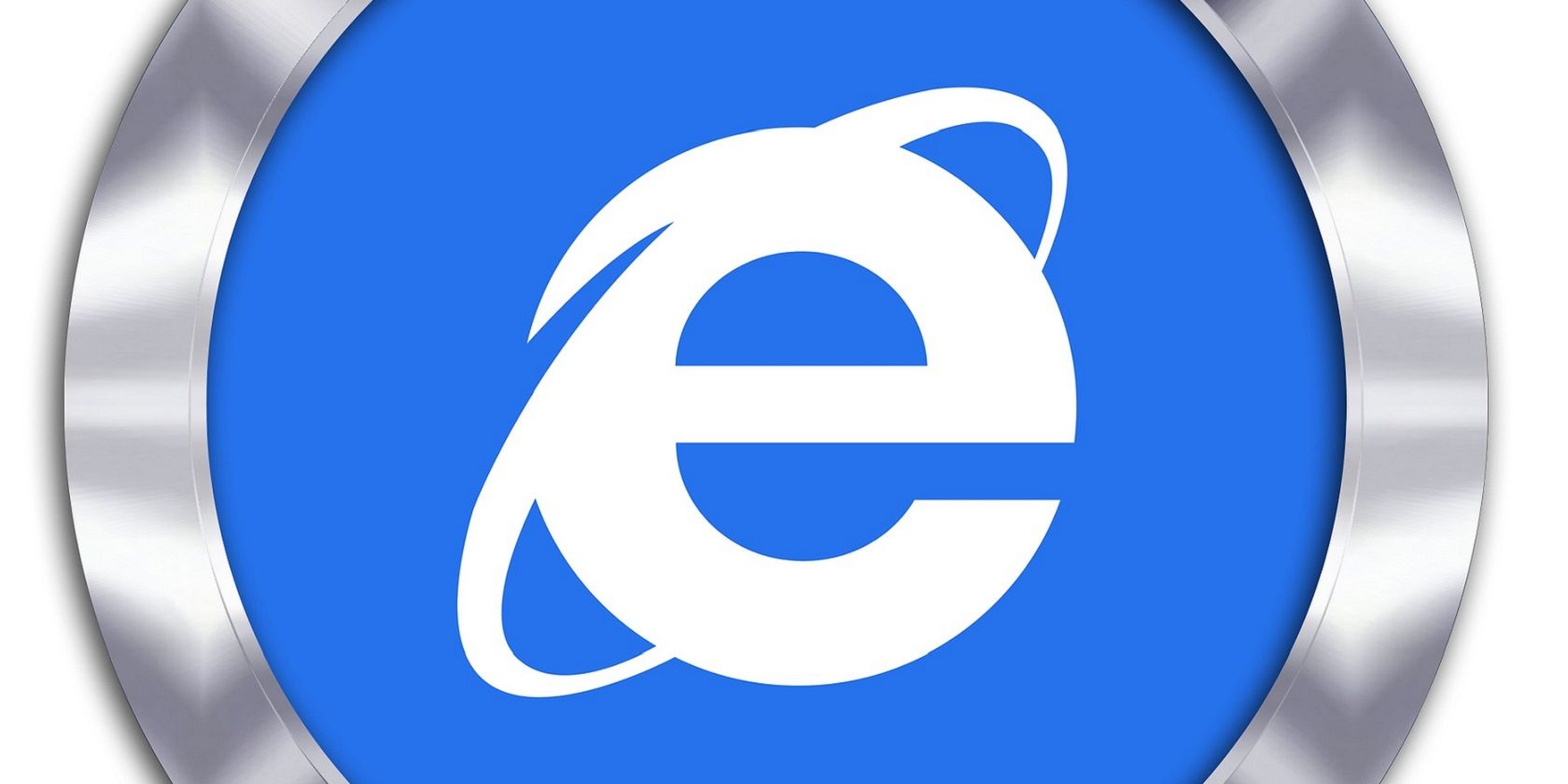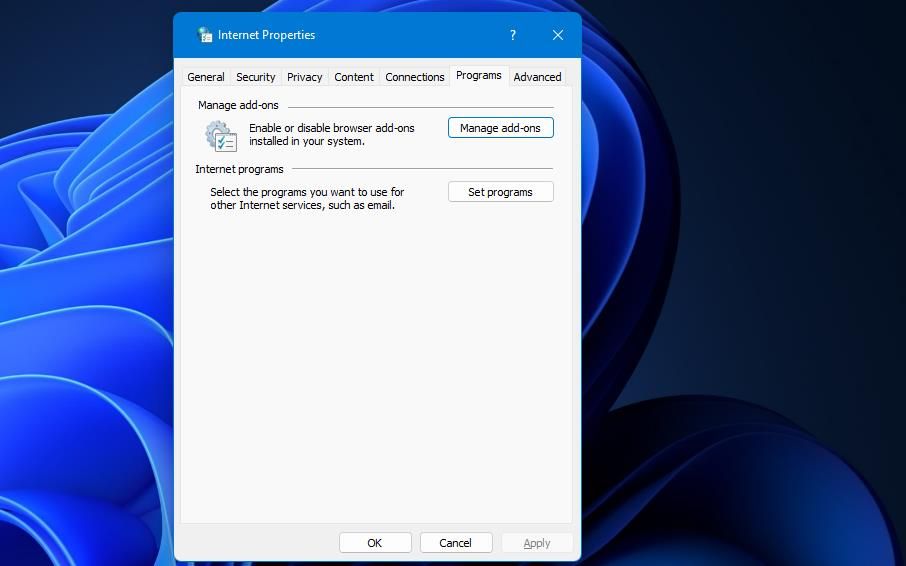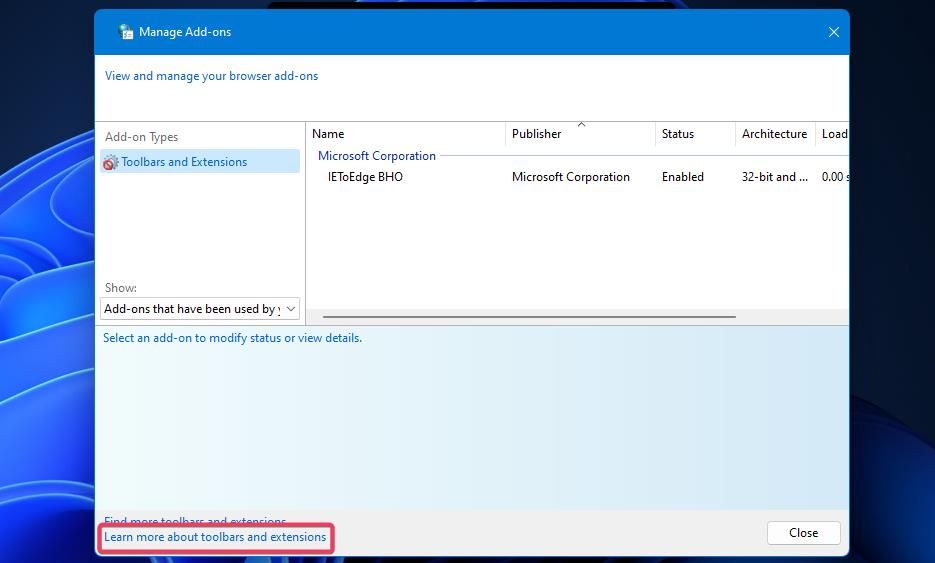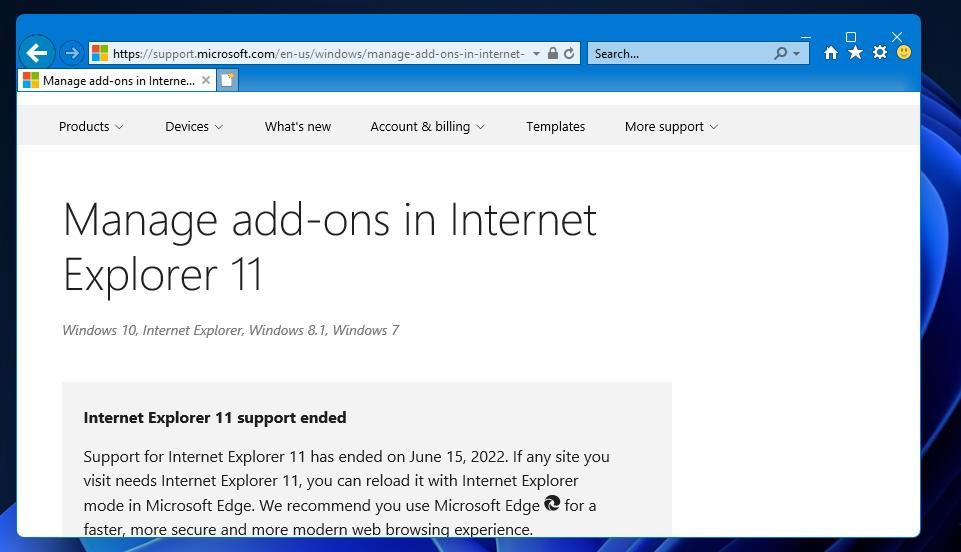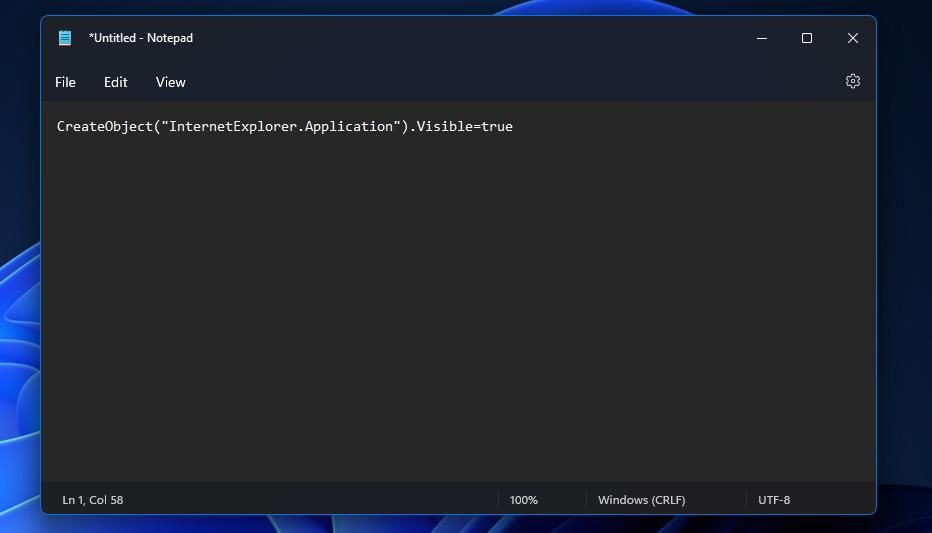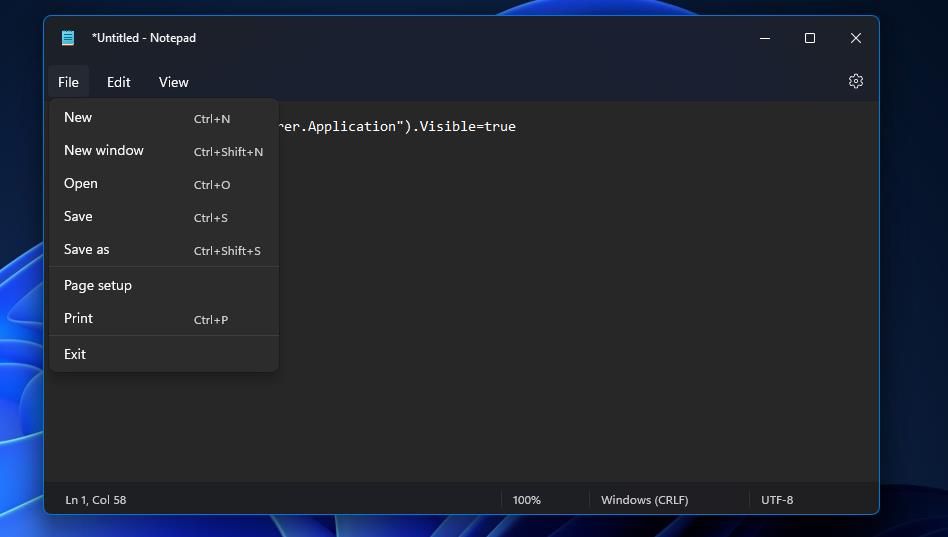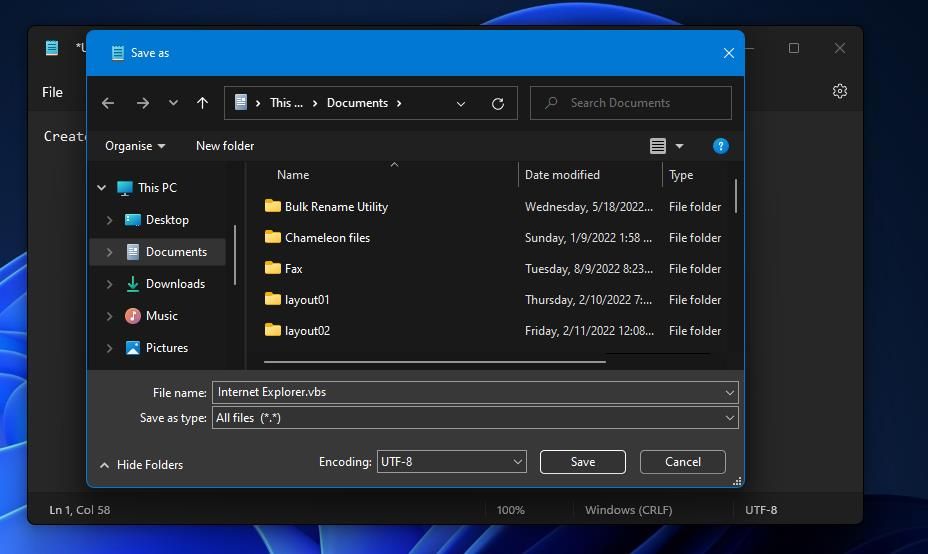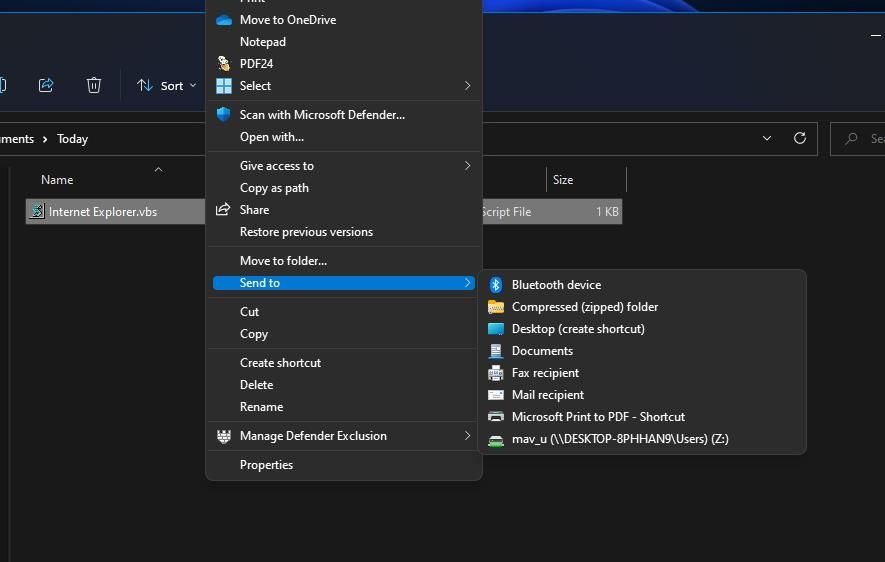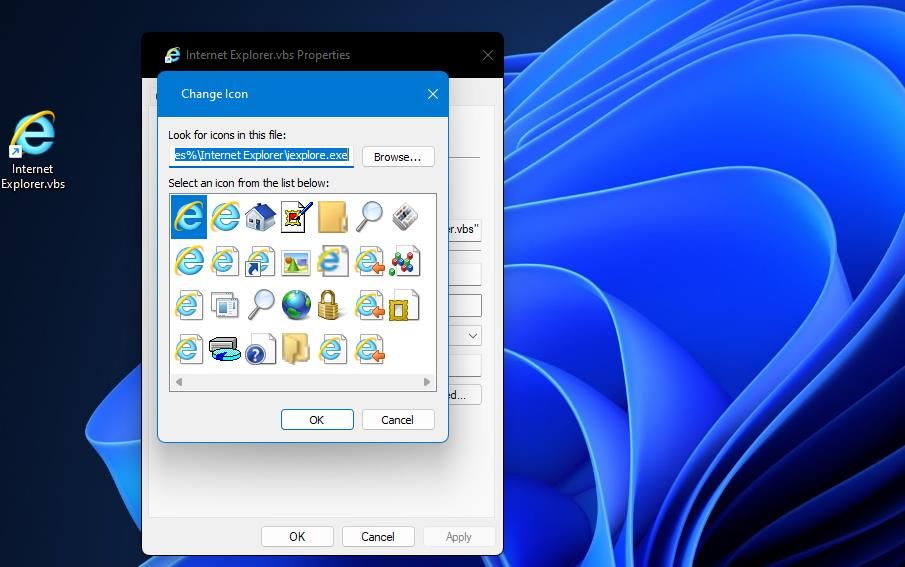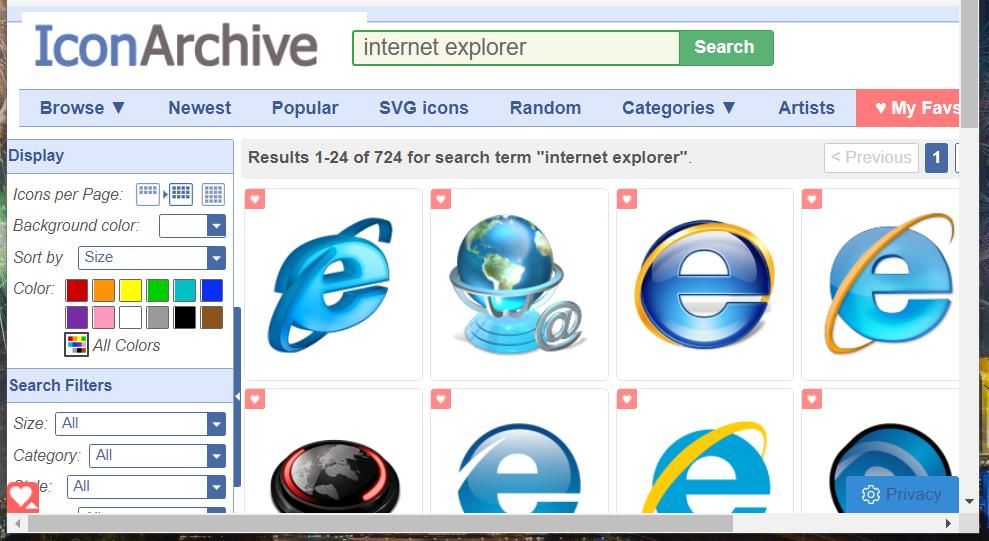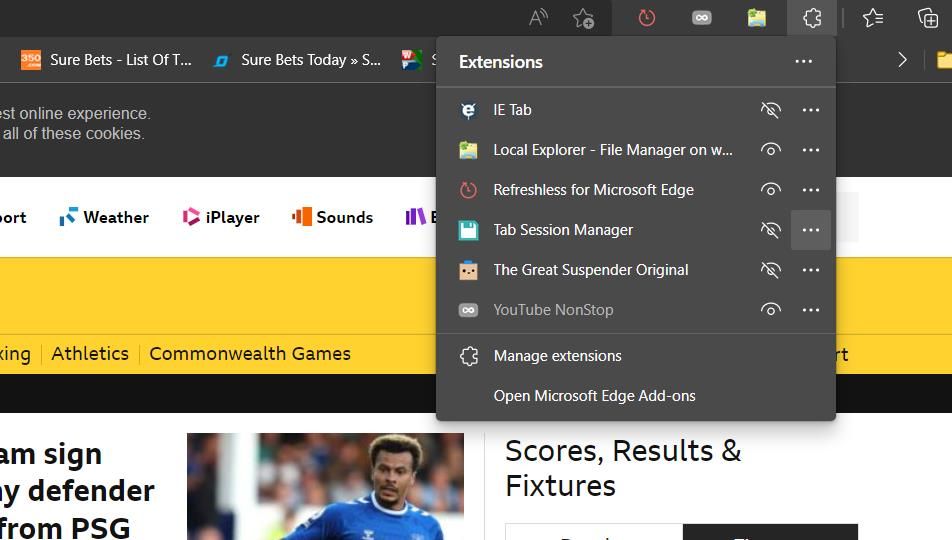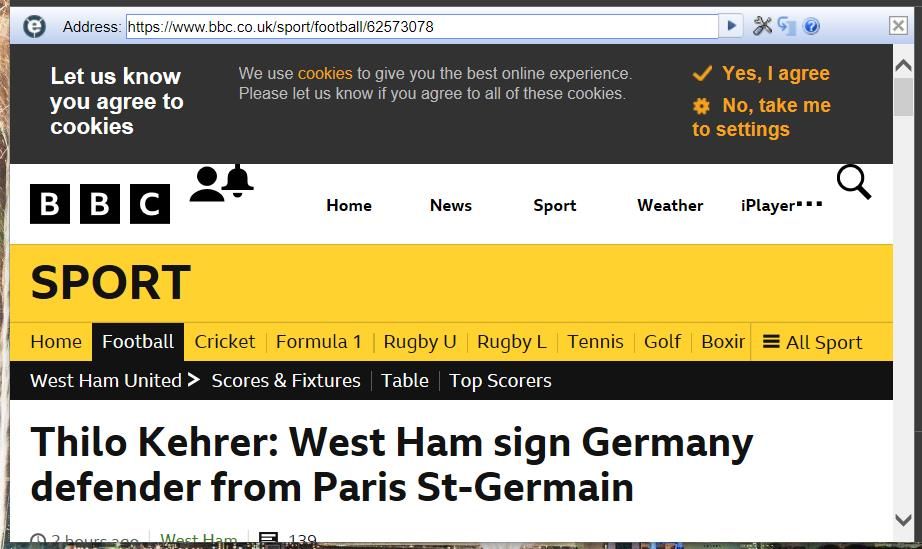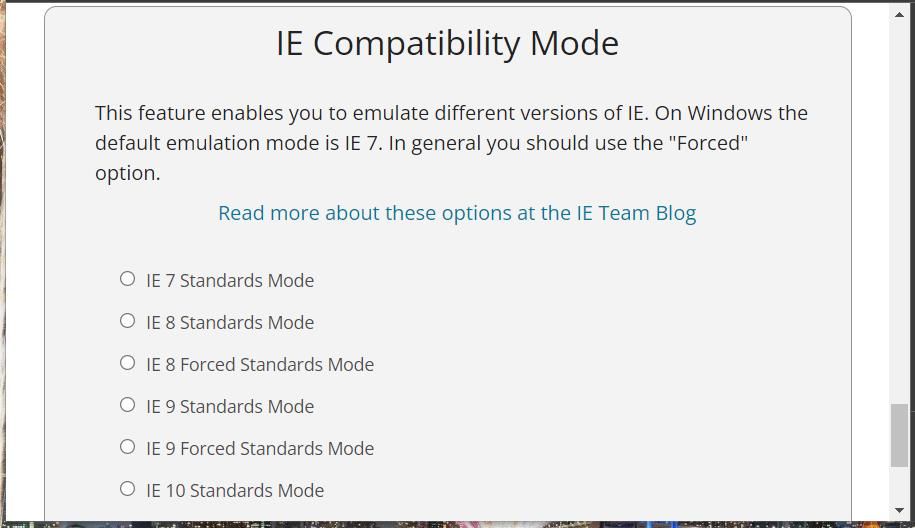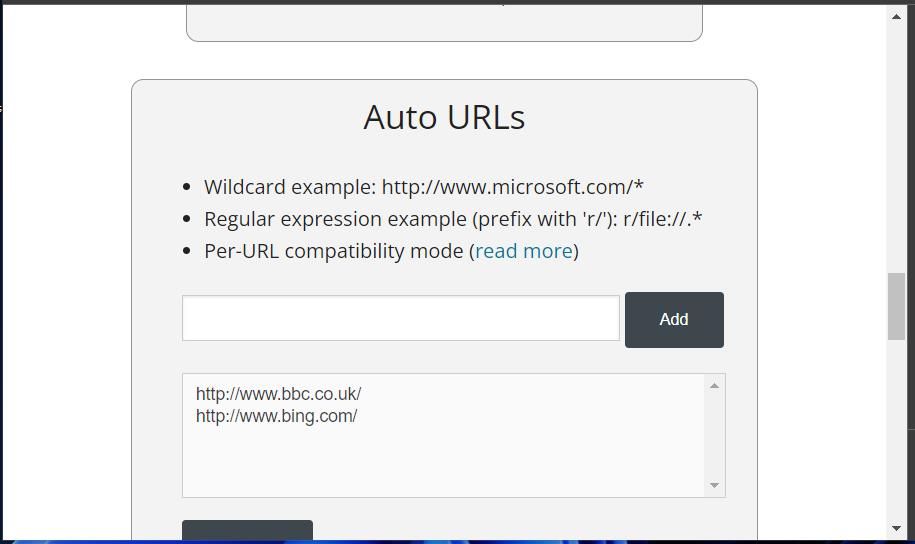Internet Explorer was once, for a few years at least, the world’s favorite web browser. However, along came Firefox and then Google Chrome which toppled IE from its perch. Internet Explorer struggled to compete with those browsers, and Microsoft eventually removed IE from Windows 11 and stopped supporting it altogether in 2022.
So, it’s safe to say Internet Explorer is now a dead duck. However, you can still browse the web with Internet Explorer in Windows 11, and here's how.
How to Open Internet Explorer From the Manage Add-ons Window
The Internet Properties window includes settings with which users once tweaked IE through. There you can press a button that brings up a Manage Add-ons window for Internet Explorer.
Here's the trick, however; a link for a Microsoft page within the Manage Add-ons window opens Internet Explorer within Windows 11. As such, here is how you can reach that Internet Explorer link in Windows 11:
- First, launch Run (the Win + R key combo is the fastest way to launch it).
- Next, input inetcpl.cpl into the Run command box.
- Click OK to view the Internet Properties window.
- Select the Programs tab.
-
Press the Manage add-ons button.
-
Then click the Learn more about toolbars and extensions link, and you'll be greeted with none other than Internet Explorer!
A "manage add-ons in Internet Explorer 11" page will open within the IE browser. That page includes a notice that tells users Microsoft has stopped supporting IE. Click the New tab button to view Explorer’s New tab page. Then you can get browsing in Internet Explorer by entering website addresses in the URL bar.
How to Open Internet Explorer With a Desktop Shortcut
The toolbars and extensions link in Manage add-ons can be considered an unclosed loop-hole for opening IE in Windows 11, which Microsoft might one day remove. However, you can always open Internet Explorer by setting up a VBS file that launches that browser.
You can set up such a file in Notepad like this:
- Click Start > All apps, and select the Notepad text editor on the menu.
-
Select this VBS file text, and press the Ctrl + C keys simultaneously to copy:
CreateObject("InternetExplorer.Application").Visible=true -
Click Edit and Paste in Notepad to add the copied VBS code to a text document.
-
Select File and that menu’s Save as option.
- Click somewhere on the Save as type drop-down menu to select the All files setting.
- Type Internet Explorer.vbs in the Save as window’s File name text box.
- Select a folder to save your Internet Explorer.vbs file in.
-
Click Save to add the file to the chosen folder.
- Close Notepad’s window.
When you double-click this Internet Explorer.vbs file, it will open the browser.
How to Make a Custom Shortcut for Internet Explorer
Now you can add a shortcut for your new VBS file to the desktop. Right-click the Internet Explorer.vbs to select Show more options > Send to. Select Desktop to send it there. Then you’ll be able to open IE by double-clicking the Internet Explorer.vbs shortcut on the desktop.
To make that shortcut more identifiable, add an Internet Explorer icon. Right-click the Internet Explorer shortcut to select Properties. Select the Change Icon option. Input the path C:\Program Files\Internet Explorer\iexplore.exe in the Look for files box. Then select the Internet Explorer icon, click OK, and select Apply.
Or you can find many alternative Internet Explorer icons on the IconArchive website. Typing Internet Explorer into the search box on Icon Archive will find a lot of matching icons. Select an IE icon from the search results and click an ICO button to download.
You can add a downloaded icon to your VBS desktop shortcut much the same. Click Browse on the Change icon window. Select the ICO file in the folder it downloaded to, and click the Change Icon window’s Open button. Pressing OK > Apply will add the custom icon to the Internet Explorer shortcut.
How to Emulate Internet Explorer With the IE Tab Browser Extension
IE Tab is a Google Chrome and Edge extension that emulates Internet Explorer within the browser. This extension enables users to utilize the benefits of Internet Explorer without needing to actually open the browser.
It’s a useful extension for viewing old webpages with antiquated Java and Silverlight applets, some of which are so old that only Internet Explorer can display them correctly. This is how you can emulate Internet Explorer in Edge and Chrome with IE Tab:
- Open the IE Tab page in Edge or Chrome.
- Select the Add to Chrome button on the IE Tab page.
- Click Add extension to confirm.
- Open a webpage you want to view with Internet Explorer’s browsing engine.
-
Click Edge’s or Chrome’s Extensions (jigsaw icon) button.
- Then click the IE Tab extension to view the open page in Explorer’s browsing engine.
-
You’ll see a new website address bar at the top of pages when browsing in IE Tab mode. There you can enter URLs for other webpages to open and view them with the IE engine.
To access options for the extension, click the Change Auto URLs button on IE Tab's address bar. Pressing that button will bring up the IE Tab Options tab from which you can select different compatibility modes ranging from IE 7 to IE 11 standards. As Internet Explorer 11 is the most recent version of the browser, it’s probably best to select the IE 11 Standards Mode option.
This extension also has an Auto URL feature that enables users to set specific pages to automatically open in IE Tab. To set pages to automatically open in IE mode, select the Enable Auto URLs checkbox in the extension’s settings tab; input a full URL (including HTTPS) for a webpage to automatically open in IE Tab within the Auto URL box, and click the Add option. Also, make sure the added URLs include a forward slash (/) at the end of them.
Rediscover Internet Explorer in Windows 11
So, that’s how you can rediscover Microsoft’s archaic web browser in Windows 11. Internet Explorer may be outdated, but there are still good reasons to utilize it in Windows 11. For instance, Internet Explorer has better backward compatibility with old websites than the likes of Chrome. As it’s one of the few browsers that still supports ActiveX, IE also works better with SharePoint.

